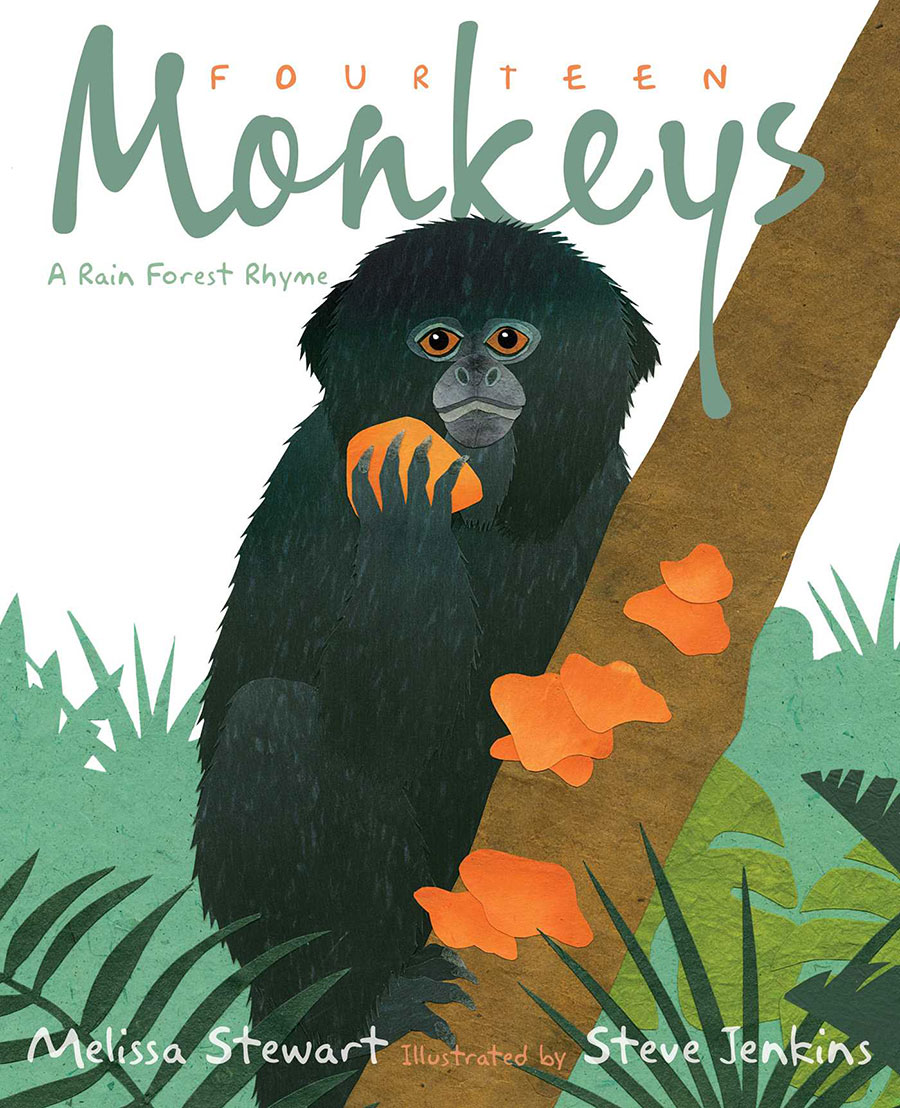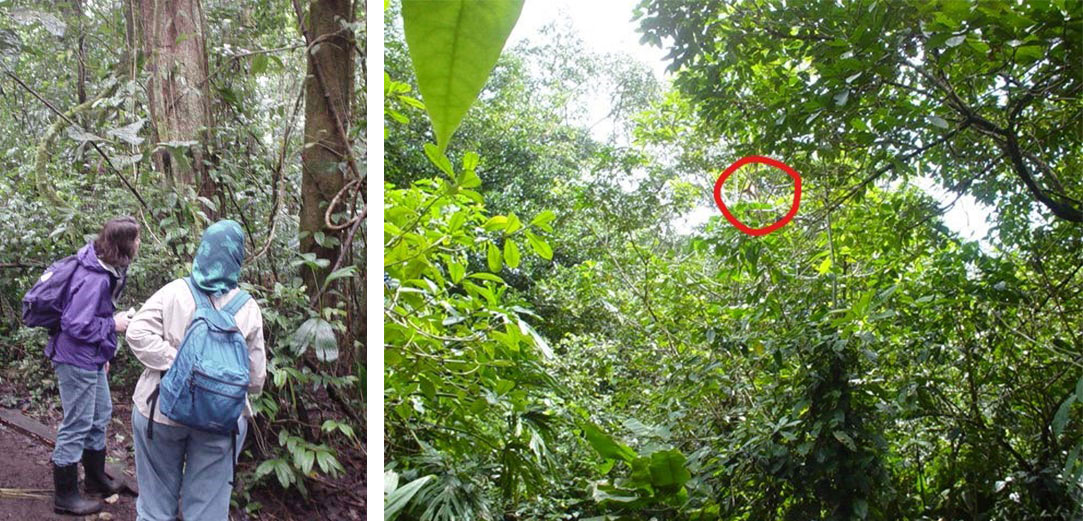Do you know any kids who are fascinated by bugs, birds, snakes, and other animals? I know I was—and still am! There’s so much to observe, explore, and learn.
I most love the nature that comes right your doorstep, like the flicker that regularly visits my yard or the recent emergence of the 17-year cicadas in my neighborhood. It boosts my feeling of connection to the other living creatures we share the planet with.
But sometimes the animals you really want to connect with are a little farther away from home. For me—especially nowadays—that’s where books come in! Resources from Start with a Book can help adults help kids launch explorations from home and make connections around topics like Nature: Our Green World and Bugs, Birds and Animals .

Here to make connections for us to the rain forest is award-winning author Melissa Stewart.
Melissa has written more than 180 science books for children and frequently visits schools to talk about her adventures in the natural world. While gathering information for her books, she has explored tropical rain forests in Costa Rica, gone on safari in East Africa, and swum with sea lions in the Galapagos Islands. She holds degrees in biology and science journalism and maintains the award-winning blog Celebrate Science. Her highly regarded website features a rich array of nonfiction writing resources.
We’re so excited that she’s here to share the adventures that led to her new book, Fourteen Monkeys: A Rain Forest Rhyme , and get us thinking about the connections we can make to the wildlife where we live.
Exploring Rain Forest and Natural Places in Your Community by Melissa Stewart

Melissa Stewart
I fell in love with monkeys during a 2005 trip to Tortugero National Park in Costa Rica. In the photo below, you can see me (left) exploring a rain forest area with my intrepid mother-in-law. We’re watching a deadly fer-de-lance snake that our guide just pointed out.
At Tortugero, we were fortunate to see—and hear—three different kinds of monkeys. Each morning, howler monkeys awoke us with their long, loud, bellowing calls.
Later in the day, we often saw spindly spider monkeys swinging through the trees. If you look carefully at the circled area in the photo below, you can see one dangling from its right arm.

One day, while my husband, brother-in-law, and niece took a siesta, my mother-in-law and I hopped into a canoe and headed up a local waterway. We saw frogs, turtles, a caiman, and all kinds of waterbirds. The pièce de resistance was an adorable capuchin monkey. For about 10 minutes, it sat in a tree less than 10 feet above us and casually snacked on a red, feathery pachira flower.
After that incredible experience, I wrote a general introduction to the monkeys of Central and South America, which was published in 2008. But my monkey mania didn’t end there. I kept doing research, and in 2017, I stumbled onto a bit of information that blew my mind—an astonishing fourteen species of monkeys inhabit Manú National Park in Peru. More than any other rain forest on Earth! How could so many kinds of monkey survive together in one place? I was dying to know.
Only scientists with a special permit can visit Manú, but that didn’t stop me from learning as much as I could about the forest and the incredible community of creatures that call it home. The result is my new book Fourteen Monkeys: A Rain Forest Rhyme . I’m so excited to share this info-licious look at how the monkeys’ lifestyles, behaviors, and unique body features allow them to live together in harmony.
After reading the book, curious kids will want to know more about these amazing monkeys, rain forest environments, and the special characteristics of the wildlife and wild places in their own community. These activities are a great way to get started.
Monkey menu poster. Using information in the main text and backmatter of Fourteen Monkeys: A Rain Forest Rhyme, create a menu poster for two monkeys that live in the same rain forest layer (emergent, canopy, understory, or forest floor). How do the monkeys’ diets differ? How do those differences help the monkeys survive?
Life as a monkey. After doing some research about rain forests in general and one of the monkeys in Fourteen Monkeys: A Rain Forest Rhyme, imagine what life would be like if you were that monkey. What would it feel like to swing through the trees? What would you see around you? What kind of sounds would you hear? How would your food smell and taste? Then share your answers in a video or describe your experience with words and pictures.
Monkey haiku. Choose a favorite monkey from Fourteen Monkeys and draw a picture of it on the blank side of an index card. Then turn the card over and write a poem about it. For example, you could create a three-lined haiku in which the first line has five syllables, the second line has seven syllables, and the third line has five syllables. Here are two examples:
Red howler monkeys
belt out loud, bellowing roars.
Others stay away.
Gliding gracefully,
long, limber spider monkeys
search for tasty fruit.
Maybe you’d prefer to create a poem in which the first line has one word, the second line has two words, the third line has three words, etc. Here’s an example:
Howlers
At sunrise
Climb, bellow loudly
Through the rain forest
Habitat mural. After looking carefully at the artwork in Fourteen Monkeys: A Rain Forest Rhyme, list all the questions the book’s illustrator, Steve Jenkins, had to ask himself and then research to make the art accurate. Possible questions include: Where in the rain forest does each monkey live? What does the monkey eat? What are its predators? What time of day is it? What time of year is it? Using the list of questions, create a mural that depicts a local animal in its natural habitat.

